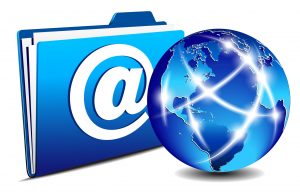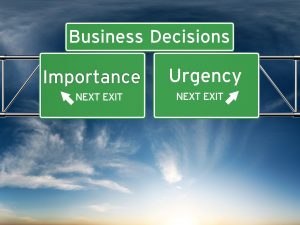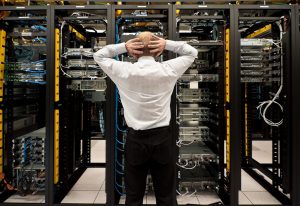Colorado Business Owners – Minimize IT Brain Damage in 2017
I am the founder, CEO, and majority owner of an IT Solutions Company (Zunesis, Inc.) headquartered in the great state of Colorado. I am so grateful for the success we have had over the years and also for the many fellow employees who have shaped, guided, and enabled Zunesis to prosper. I also have a high level of respect for other small business owners because I know the depth of challenges, decisions, and conflict they face.
I recently read an article that stated that less than 20% of all Microsoft Office licenses were provided through the Microsoft Cloud. This was a shocking statistic to me. If you are a small business owner (10-250 employees), why would you not migrate to O365?
 We made the decision in 2009 to migrate to Office 365, and that has turned out to be a fantastic decision. Trust me, fellow small business owners, migrating to and using Office 365 is easy and straight forward. You never have to worry about your managed services provider going out of business or about your trusted IT guy or gal finding something better. I can also tell you that using Office 365 instead of our own internal staff have freed my employees up to serve our customers and not be stuck fixing our own IT stuff.
We made the decision in 2009 to migrate to Office 365, and that has turned out to be a fantastic decision. Trust me, fellow small business owners, migrating to and using Office 365 is easy and straight forward. You never have to worry about your managed services provider going out of business or about your trusted IT guy or gal finding something better. I can also tell you that using Office 365 instead of our own internal staff have freed my employees up to serve our customers and not be stuck fixing our own IT stuff.
Financially, I am also happy with our decision to move to Office 365. When I consider the improved up-time and productivity for my employees, the dollars spent are well worth it. I also have this hunch that the overall security of my business is in better hands, than my team trying (on the side of their regular jobs) to make sure every application is properly patched, updated, and protected.
Full disclosure: Yes, Zunesis is an IT Solution Provider; and, yes, we specialize in helping small and large organizations migrate to Office 365 and Azure; however, our passion for doing this all began with the VALUE we received in 2009 when we made the decision to implement Microsoft Office 365 for ourselves.
If you would like to minimize brain damage in 2017, do what we did in 2009 and consider migrating your business to Office 365. Your quality of life will improve substantially! I hope you have a wonderful 2017.
It’s a frustrating routine: I fall sound asleep at about 10:30 only to wake up a few hours later with my mind racing. This, of course, causes a myriad of after-effects, not the least of which is a very crabby morning-after. So, at the urging of my husband, my New Year’s resolution for 2017 is simple: This year, I resolve to sleep through the night.
In trolling the self-help blogs, a recurring message was that an anecdote to middle-of-the-night worrying is simply being confident that you are in control of all the things that need to be done the next day. Although I’m an avid planner, I have days where I don’t make much of dent in my list. Knowing that, I focused on time management and found five strategies to adopt:
1. Have one “must-achieve” goal every day.
Start each morning with one “must-achieve goal.” More than likely, this is the one thing that will wake you up in the middle of night. If you know that it is the one thing you’re absolutely, no matter what, getting done tomorrow, you don’t need to stress about it tonight.
2. Fight the tyranny of the urgent.
 If you succumb to the tyranny of the urgent, you can find yourself going days, or even weeks, without touching the important stuff. Don’t be afraid to ignore or delegate the things that get in the way of real forward momentum.
If you succumb to the tyranny of the urgent, you can find yourself going days, or even weeks, without touching the important stuff. Don’t be afraid to ignore or delegate the things that get in the way of real forward momentum.
3. Never touch things twice.
Don’t save an email or a phone call to deal with later. As soon as something gets your attention you should act on it, delegate it, or delete it.
4. Eat a frog.
Do the least appetizing, most dreaded item on your to-do list before you do anything else. This not only gets the nasty task out of the way, but it also gives you a sense of success, boosting further productivity.
5. Get ready for tomorrow before leaving the office.
This practice accomplishes two things: it helps you solidify what you’ve accomplished today, and it ensures you’ll have a productive tomorrow.
Happy New Year, and here’s to sleeping through the night in 2017!
It’s a frustrating routine: I fall sound asleep at about 10:30 only to wake up a few hours later with my mind racing. This, of course, causes a myriad of after-effects, not the least of which is a very crabby morning-after. So, at the urging of my husband, my New Year’s resolution for 2017 is simple: This year, I resolve to sleep through the night.
In trolling the self-help blogs, a recurring message was that an anecdote to middle-of-the-night worrying is simply being confident that you are in control of all the things that need to be done the next day. Although I’m an avid planner, I have days where I don’t make much of dent in my list. Knowing that, I focused on time management and found five strategies to adopt:
1. Have one “must-achieve” goal every day.
Start each morning with one “must-achieve goal.” More than likely, this is the one thing that will wake you up in the middle of night. If you know that it is the one thing you’re absolutely, no matter what, getting done tomorrow, you don’t need to stress about it tonight.
2. Fight the tyranny of the urgent.
 If you succumb to the tyranny of the urgent, you can find yourself going days, or even weeks, without touching the important stuff. Don’t be afraid to ignore or delegate the things that get in the way of real forward momentum.
If you succumb to the tyranny of the urgent, you can find yourself going days, or even weeks, without touching the important stuff. Don’t be afraid to ignore or delegate the things that get in the way of real forward momentum.
3. Never touch things twice.
Don’t save an email or a phone call to deal with later. As soon as something gets your attention you should act on it, delegate it, or delete it.
4. Eat a frog.
Do the least appetizing, most dreaded item on your to-do list before you do anything else. This not only gets the nasty task out of the way, but it also gives you a sense of success, boosting further productivity.
5. Get ready for tomorrow before leaving the office.
This practice accomplishes two things: it helps you solidify what you’ve accomplished today, and it ensures you’ll have a productive tomorrow.
Happy New Year, and here’s to sleeping through the night in 2017!
Enterprise DR is like having insurance for your cell phone.
Thank you, Kevin Kornblith, for this analogy.
Some people can lose a phone, and if they take a week to get a new one, it’s no big deal. Others might drop a phone in the sink and be okay if it takes a couple hours to drive to a store to pick up a new one. Then, there are people who, when they hear that dreaded cruuuunch of a broken phone, they need someone to slap a new phone in their hand immediately. This is how we see disaster recovery solutions today.
 You’ve got storage based snapshots, which are often performance impacting and confined to finite windows to limit their collateral damage. As a result, they don’t run often; and it’s very common to have a snapshot once every 24 hours. Although cost effective, you expose yourself to losing 23:59 hours of data. In a real disaster and failover, the environment would still need to be pieced back together.
You’ve got storage based snapshots, which are often performance impacting and confined to finite windows to limit their collateral damage. As a result, they don’t run often; and it’s very common to have a snapshot once every 24 hours. Although cost effective, you expose yourself to losing 23:59 hours of data. In a real disaster and failover, the environment would still need to be pieced back together.
Business Continuity systems, like Veeam, do an excellent job at protecting data, and their recovery points continue to shrink. They’re now down to a 15-minute Recovery Point, which is excellent for their continuity role. However, if you’re in an industry with a high cost of downtime, you might still need something better. Active-Active systems are an option – but wow, you’re going to pay for it.
For a fraction of the cost of active-active, you should use Zerto. Zerto is hardware and hypervisor agnostic with Recovery Points of 5 seconds and Recovery Times of 10 minutes. It also has a couple of bonuses that can be used while you wait and hope to never need a true DR solution.
Zerto can be used to migrate VMs. Since it’s hardware and hypervisor agnostic, you can migrate from AWS to Azure to any storage array. Its non-disruptive DR testing is fantastic, and you can spin off nearly real-time environments for test dev. Plus, it’s a great tool for cryptolocker or ransomware mitigation – just “roll-back” to the second before an attack.
Enterprise DR is like having insurance for your cell phone.
Thank you, Kevin Kornblith, for this analogy.
Some people can lose a phone, and if they take a week to get a new one, it’s no big deal. Others might drop a phone in the sink and be okay if it takes a couple hours to drive to a store to pick up a new one. Then, there are people who, when they hear that dreaded cruuuunch of a broken phone, they need someone to slap a new phone in their hand immediately. This is how we see disaster recovery solutions today.
 You’ve got storage based snapshots, which are often performance impacting and confined to finite windows to limit their collateral damage. As a result, they don’t run often; and it’s very common to have a snapshot once every 24 hours. Although cost effective, you expose yourself to losing 23:59 hours of data. In a real disaster and failover, the environment would still need to be pieced back together.
You’ve got storage based snapshots, which are often performance impacting and confined to finite windows to limit their collateral damage. As a result, they don’t run often; and it’s very common to have a snapshot once every 24 hours. Although cost effective, you expose yourself to losing 23:59 hours of data. In a real disaster and failover, the environment would still need to be pieced back together.
Business Continuity systems, like Veeam, do an excellent job at protecting data, and their recovery points continue to shrink. They’re now down to a 15-minute Recovery Point, which is excellent for their continuity role. However, if you’re in an industry with a high cost of downtime, you might still need something better. Active-Active systems are an option – but wow, you’re going to pay for it.
For a fraction of the cost of active-active, you should use Zerto. Zerto is hardware and hypervisor agnostic with Recovery Points of 5 seconds and Recovery Times of 10 minutes. It also has a couple of bonuses that can be used while you wait and hope to never need a true DR solution.
Zerto can be used to migrate VMs. Since it’s hardware and hypervisor agnostic, you can migrate from AWS to Azure to any storage array. Its non-disruptive DR testing is fantastic, and you can spin off nearly real-time environments for test dev. Plus, it’s a great tool for cryptolocker or ransomware mitigation – just “roll-back” to the second before an attack.




